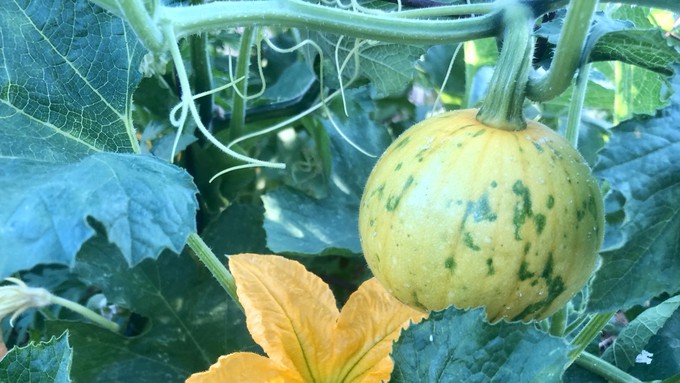
Elk Grove, Orangevale each host information events

Learn how to grow pumpkins -- many times bigger than this one! -- during "Grow Orangevale Gardening Day" this Saturday. Elk Grove also will be the site of a garden information event, on both Saturday and Sunday. Kathy Morrison
The first spring weekend is ahead of us, but it's going to be rainy! Gee, and just as we were re-adjusting to getting dirt under our fingernails and wearing sun protection.
Well, here's how to make the best of it: This weekend, two free gardening information events will be held, one at either end of Sacramento County. Open to all, these events will be especially useful for beginning gardeners, but also should have good refresher information for experienced folks.
Ever wanted to grow a giant pumpkin? In Orangevale on Saturday, teen gardener and youth pumpkin weigh-off champion Sankalp Immadisetty will offer his tips as part of the "Grow Orangevale Gardening Day" event at the Orangevale Library.
From 10 a.m. to 4 p.m., "Grow Orangevale" will have a full slate of talks, as well as a plant and seed swap. (The public is welcome to bring plants or seeds to trade.)
Podcaster and lifetime master gardener "Farmer Fred" Hoffman will speak at 11 a.m., followed by Immadisetty and the Orangevale Farm & Garden Club at noon. A composting workshop with Lisa Christensen begins at 1 p.m., and the California Native Plant Society will give a presentation at 2 p.m.
The Orangevale Library is at 8820 Greenback Lane, Suite L, Orangevale.
In Elk Grove, meanwhile, the Elk Grove Community Garden and Learning Center will present a free "Gardening 101" class, 10 a.m. to noon. both Saturday and Sunday. "Learn to set up a garden big or small," say organizers. "Learn the importance of soil, water and sun."
RSVPs for this event can be called in to (916) 818-9108, but walk-ins also are welcome. The Elk Grove garden is at 10025 Hampton Oak Drive, Elk Grove.
Comments
0 comments have been posted.Sacramento Digs Gardening to your inbox.
Sites We Like
Garden Checklist for week of July 21
Your garden needs you!
* Keep your vegetable garden watered, mulched and weeded. Water before 8 a.m. to reduce the chance of fungal infection and to conserve moisture.
* Feed vegetable plants bone meal, rock phosphate or other fertilizers high in phosphate to stimulate more blooms and fruiting. (But wait until daily high temperatures drop out of the 100s.)
* Don’t let tomatoes wilt or dry out completely. Give tomatoes a deep watering two to three times a week.
* Harvest vegetables promptly to encourage plants to produce more. Squash especially tends to grow rapidly in hot weather. Keep an eye on zucchini.
* Pinch back chrysanthemums for bushy plants and more flowers in September.
* Remove spent flowers from roses, daylilies and other bloomers as they finish flowering.
* Pinch off blooms from basil so the plant will grow more leaves.
* Cut back lavender after flowering to promote a second bloom.
* It's not too late to add a splash of color. Plant petunias, snapdragons, zinnias and marigolds.
* From seed, plant corn, pumpkins, radishes, winter squash and sunflowers.